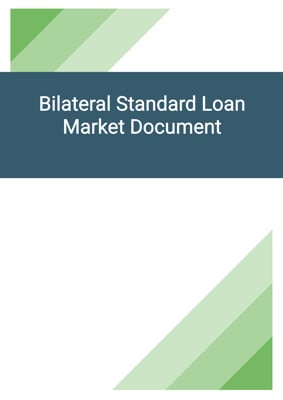How to Tailor the Document for Your Need?
01
Create Document
Fill in the details of the parties. You can click the "Fill with Member’s Information" button to complete it with information saved to your account.
02
Fill Information
Please fill in any additional information by following the step-by-step guide on the left hand side of the preview document and click the "Next" button.
03
Get Document
When you are done, click the "Get Document" button and you can download the document in Word or PDF format.
04
Review Document
The document should be signed by the authorised signatory (or directors of a company) and witnessed to complete the formality.
Document Preview
Document Description
The document titled 'Counter Indemnity to a Guarantor for a Loan' is a legal agreement entered into between two parties: the guarantor and the indemnifier. The document is of great importance as it establishes the terms and conditions under which the guarantor agrees to provide a guarantee to the bank on behalf of the indemnifier.
The document begins with a brief introduction, stating that it is a counter indemnity entered into on the current date. It then proceeds to outline the parties involved, namely the guarantor and the indemnifier, along with their respective registered offices. The purpose of the document is explained in the 'whereas' clause, stating that the bank has agreed to make a loan to the borrower, subject to the guarantor providing a guarantee and the indemnifier entering into this counter-indemnity.
The document consists of several sections, each serving a specific purpose. The first section is the interpretation section, which provides definitions for key terms used throughout the document. This ensures clarity and understanding of the terms used in the counter-indemnity.
The second section is the counter-indemnity section, which outlines the obligations of the indemnifier towards the guarantor. It states that the indemnifier undertakes to pay the guarantor the indemnified amount whenever the guarantor makes a payment or receives a demand or notice in respect of such amount. The indemnifier's liability is limited to the aggregate of the principal sum and any accrued interest, fees, commissions, charges, and expenses.
The third section is the continuing indemnity section, which emphasizes that the indemnity provided by the counter-indemnity is ongoing and extends to the ultimate balance of the indemnified amounts, regardless of any intermediate payment or discharge.
The fourth section is the discharge and release section, which clarifies that the indemnifier cannot terminate the counter-indemnity. However, the guarantor may discharge or release the indemnifier by written instrument, provided that the indemnified amounts have been fully paid. The discharge or release is subject to certain conditions, such as the validity of any payment, performance, or security received by the guarantor.
The fifth section is the demands section, which states that demands under the counter-indemnity can be made at any time, regardless of whether any demands or proceedings are being made against the borrower, the guarantor, or any third party. This ensures that the indemnifier's liabilities and obligations are not dependent on external factors.
The sixth section is the suspense account section, which grants the guarantor the right to place and keep any amounts received under the counter-indemnity to the credit of an account of the indemnifier or any other person chosen by the guarantor. The guarantor is not obligated to apply these amounts towards the discharge of the indemnified amounts.
The seventh section is the certificates section, which states that a certificate issued by the guarantor regarding the amount of indemnified amounts shall be conclusive evidence against the indemnifier, unless there is a manifest error.
The eighth section is the notice section, which provides the contact details of the parties involved, including their names, addresses, emails, and contact persons. This ensures effective communication between the parties.
The ninth section is the invalidity section, which states that if any provision of the counter-indemnity becomes invalid, illegal, or unenforceable, it will not affect the validity, legality, and enforceability of the remaining provisions.
The tenth section is the rights of third parties section, which clarifies that only the parties to the counter-indemnity have the right to enforce its terms. This prevents any third party from claiming rights under the document.
The eleventh and final section is the choice of law and jurisdiction section, which specifies that the counter-indemnity is governed by a chosen jurisdiction and that any judgment or order in connection with the document is binding and enforceable in other jurisdictions.
In conclusion, the document 'Counter Indemnity to a Guarantor for a Loan' is a comprehensive legal agreement that establishes the obligations and responsibilities of the indemnifier towards the guarantor. It covers various aspects, including interpretation, counter-indemnity, continuing indemnity, discharge and release, demands, suspense account, certificates, notice, invalidity, rights of third parties, and choice of law and jurisdiction.
How to use this document?
To effectively use the document 'Counter Indemnity to a Guarantor for a Loan,' follow these steps:
1. Read and understand the entire document, paying attention to the definitions provided in the interpretation section. This will ensure clarity and comprehension of the terms used throughout the document.
2. Familiarize yourself with the counter-indemnity section, which outlines the obligations of the indemnifier. Understand that the indemnifier is required to pay the guarantor the indemnified amount whenever a payment is made or a demand or notice is received.
3. Take note of the limitations on the indemnifier's liability, as stated in the counter-indemnity section. The indemnifier's liability is capped at the principal sum and any accrued interest, fees, commissions, charges, and expenses.
4. Understand the continuing indemnity section, which emphasizes that the indemnity provided by the counter-indemnity is ongoing and extends to the ultimate balance of the indemnified amounts.
5. Be aware of the conditions for discharge and release, as outlined in the respective section. Note that the indemnifier cannot terminate the counter-indemnity, but the guarantor may discharge or release the indemnifier if the indemnified amounts have been fully paid.
6. Take note of the demands section, which clarifies that demands under the counter-indemnity can be made at any time, regardless of external factors. Understand that the indemnifier's liabilities and obligations are not dependent on ongoing demands or proceedings against other parties.
7. Understand the suspense account section, which grants the guarantor the right to place and keep any amounts received under the counter-indemnity to the credit of an account of the indemnifier or any other person chosen by the guarantor. Note that the guarantor is not obligated to use these amounts towards the discharge of the indemnified amounts.
8. Be aware of the certificates section, which states that a certificate issued by the guarantor regarding the amount of indemnified amounts is conclusive evidence against the indemnifier, unless there is a manifest error.
9. Ensure effective communication by referring to the notice section, which provides the contact details of the parties involved. Use these details to establish communication channels and address any queries or concerns.
10. Understand the invalidity section, which states that if any provision of the counter-indemnity becomes invalid, illegal, or unenforceable, it will not affect the validity, legality, and enforceability of the remaining provisions.
11. Finally, be aware that the rights of third parties are not recognized under the counter-indemnity. Only the parties involved have the right to enforce its terms.
By following these steps, you can effectively use the document 'Counter Indemnity to a Guarantor for a Loan' and ensure compliance with its terms and conditions.
Not the right document?
Don’t worry, we have thousands of documents for you to choose from:




















